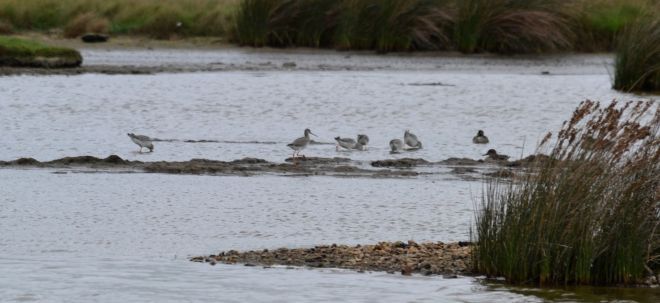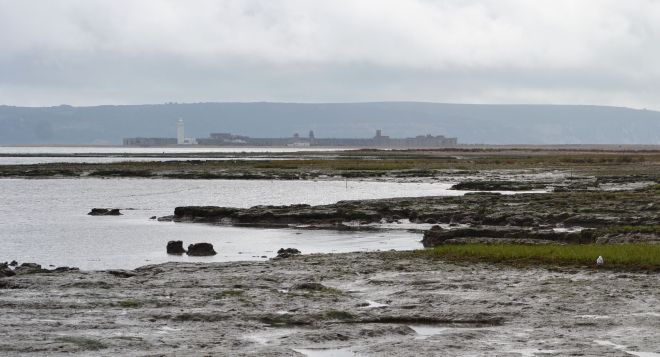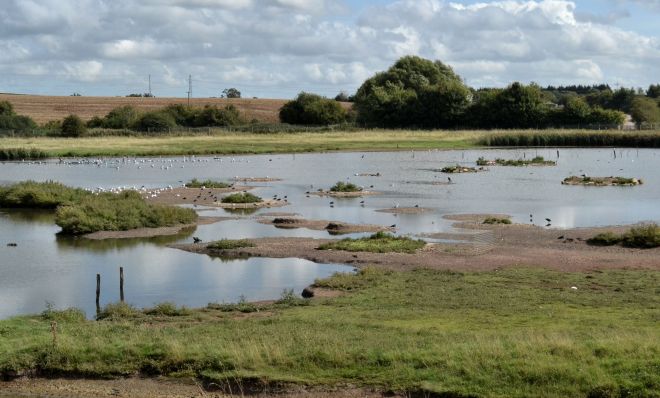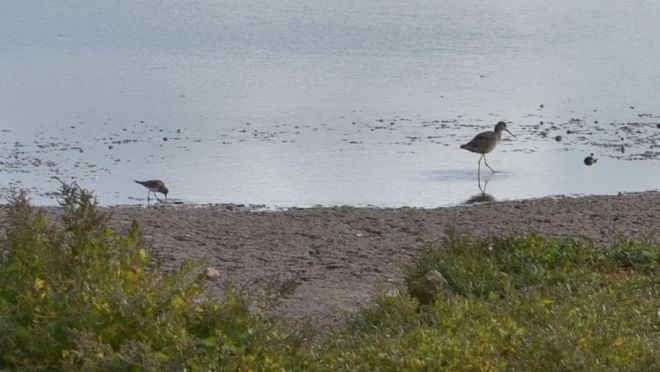When yesterday turned out to be work free I rather fancied going somewhere. The choice of location was the Keyhaven / Pennington nature reserve on the Solent where a White-rumped Sandpiper had been reported on four of the previous seven days. This is a Nearctic wader that I have observed once previously, but as the Hampshire site regularly holds things of interest a nice day out was in the offing.
I arrived at the end of Lower Pennington Lane (SZ318927) from Lymington some time after 11am in overcast, drizzly conditions and made my way out to the reserve’s Fishtail Lagoon that is often the spot for scarcer visiting waders. There a few local birders were already in place hoping the WRS would come in as it had previously from late morning onwards. But in three hours on-site here of this bird there was no sign. So what else was on offer?
Well Bar-tailed Godwit, Grey Plover and Knot, the three regular British waders I have missed on passage through Oxfordshire this year, were all present on either side of the sea wall. But the stand-out encounter was with a delightful group of six Spotted Redshank (pictured below) that were present throughout my stay.

Spotted Redshank on Fishtail Lagoon
The on-site information boards explain that just inside the sea wall here are a number of shallow, brackish lagoons that are connected to the sea through a system of sluices and tidal flaps. The salinity in these lagoons varies but is generally lower than sea water and so a specialised habitat has arisen. I do not know the precise detail but that seems like a reasonable explanation why so many scarcer passage waders occur here.
Most of my previous Spotted Redshank sightings have been of single post-breeding birds amongst large mixed flocks, as these Tundra breeders pass through Great Britain from late-June into the autumn. Today’s six birds were the most I have seen in one location, and being the main feature of interest on the lagoon it was a good long opportunity to gain a complete understanding of the species. In appearance, this can be summarised as being slimmer and more elegant than Common Redshank, longer legged and greyer toned with a longer, finer bill and striking combination of black eye stripe and white supercilium.
But what struck me most was the feeding action. Compared to the probing habits of Common Redshank these most attractive cousins reminded me of Avocet as they moved in a group (pictured above) sweeping their bills from side to side underwater. All this was enjoyed greatly through those three hours here until just before 3pm, when mindful of rush hour traffic around Southampton and Winchester I headed home.

Hurst Castle from Pennington Marsh




